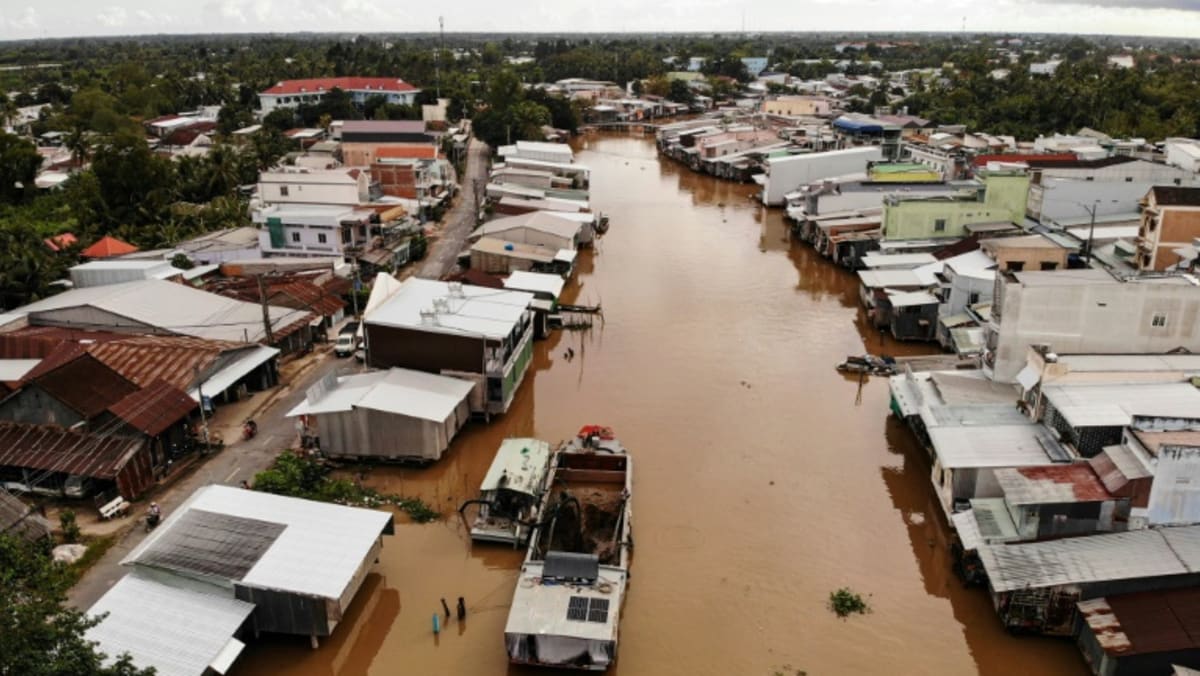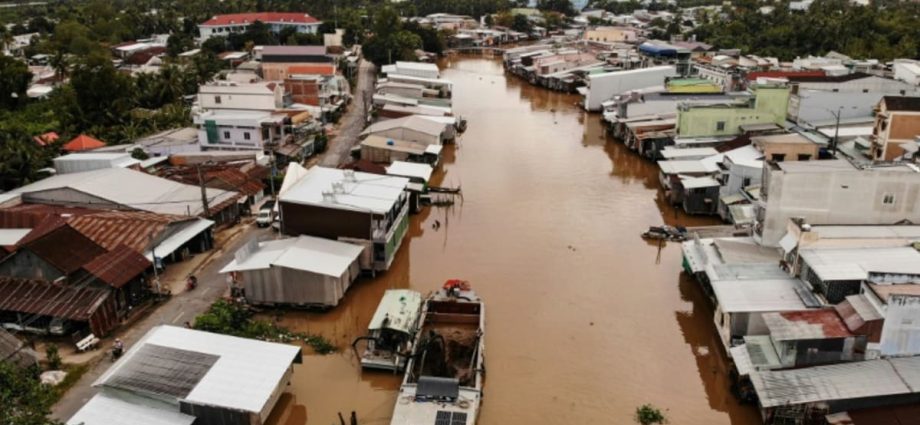
Over the past two decades, hydropower dams upstream on the Mekong have restricted the flow of sand to the delta.
Sand mining to feed Vietnam’s construction boom is also fast depleting resources, according to a major WWF report published earlier this year.
With less sand, river flows become lighter and faster and hit the banks at greater speed, accelerating erosion.
Between 2016 and August this year, at least 750km of riverbank and nearly 2,000 houses in the Mekong Delta region have sunk into rivers, government figures show.
“LAST GRAIN OF SAND”
Along the Mekong, diggers and boats work around the clock, dredging sand from the riverbed.
According to Vietnam’s Ministry of Transport, the Delta region needs 54 million cubic metres of sand for six major national highways before 2025.
The river system can provide less than half, the ministry says.
Important projects have already been delayed while authorities debate alternatives, including sea sand or imports from neighbouring Cambodia.
In Can Tho, cows sit next to unmanned excavators, and sections of a road that will eventually run to Ca Mau province are still underwater – awaiting sand to cover them.

